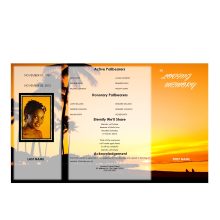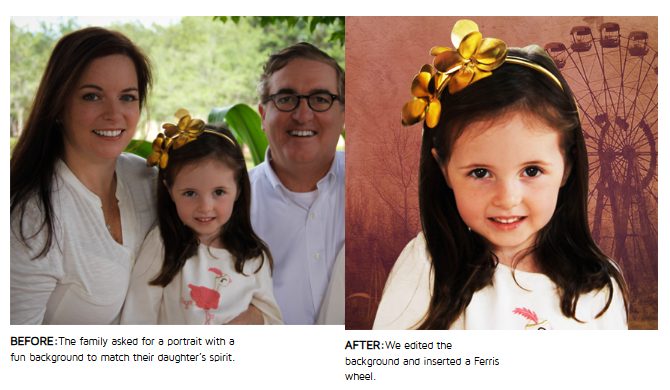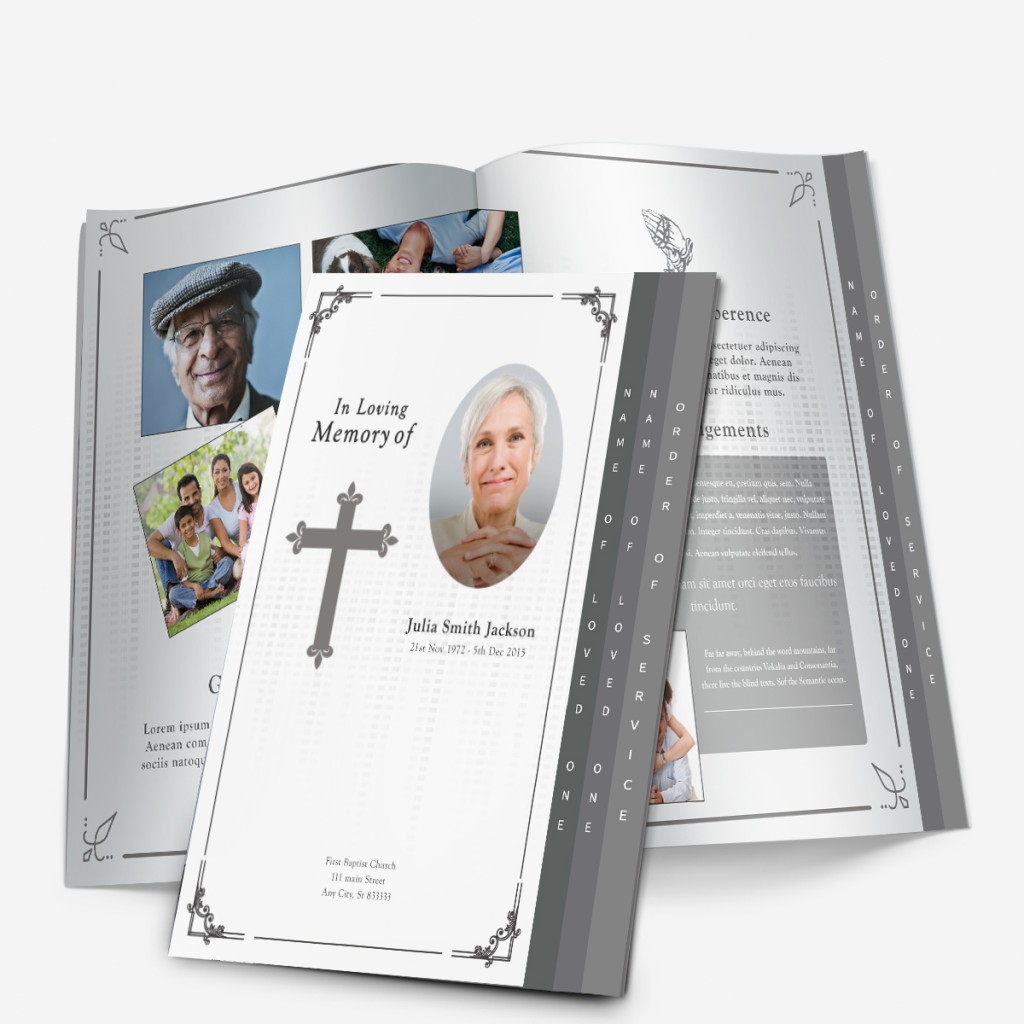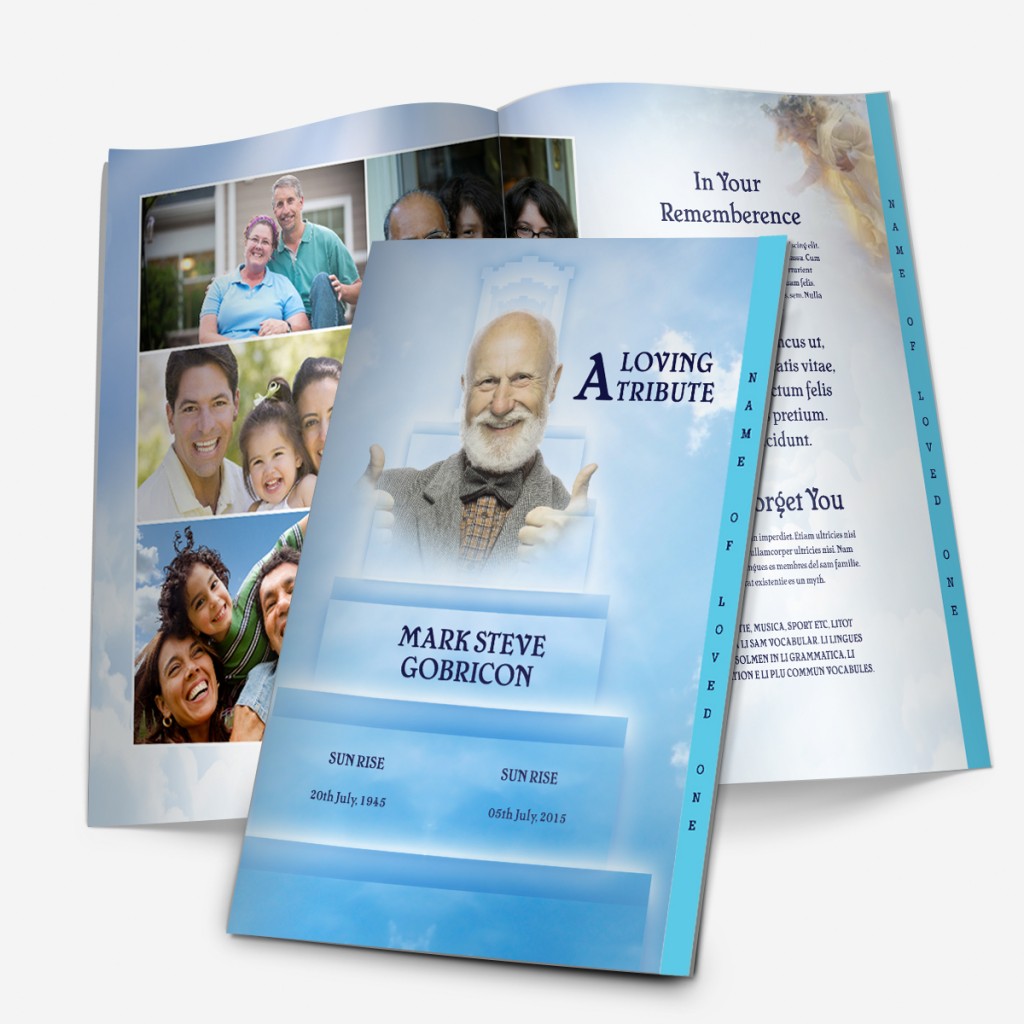When you have to finish a program today, clarity and a simple plan reduce stress. This guide gives you a step-by-step timeline you can follow, from gathering details and photos to exporting a crisp PDF in Microsoft Word (DOCX). Traditions vary by faith and culture; if you’re unsure about specific readings, music, or symbols, confirm with the officiant before printing.
Hour 0–1: Gather the essentials (fast checklist)
Service details
- Full name (and preferred name if different), birth and passing dates.
- Venue, date, time, and officiant/celebrant.
- Confirm the order of events (welcome, readings, eulogy/tributes, music, committal/benediction). If you need structure, use this primer on order of service format and adapt to your tradition.
Participants
- Officiant/celebrant, readers, musicians, pallbearers/ushers (if applicable).
- Double-check spellings and titles.
Text blocks
- Short obituary or life sketch (150–250 words).
- One poem, prayer, scripture, or quote (keep it brief for readability).
- Acknowledgements and, if desired, a donations line (“In lieu of flowers…”).
Photos
- Pick 1 hero portrait for the cover and 3–6 supporting images for inside.
- Prefer the sharpest originals you can find. If you must mix decades and cameras, plan on consistent cropping and simple layouts.
Layout decision
- For true same-day speed, choose single-fold (Letter size, one fold) or a 2-page graduated (clear sections, easy to read). If you’re unsure which layout fits your content, scan this overview of funeral program layouts and pick the simplest option that holds your text.
Photo quality reality check
- Most photos print cleanly at ~300 PPI at final size. If you need quick sizing ideas or you’re enlarging a small original, this guide to photo resolution for printing will help you avoid softness.
- If your cover portrait is damaged or very faded and you can’t fix it fast, consider a quick professional pass: our photo restoration and editing service can return a clean, print-ready image you can drop into Word.
Hour 1–3: Choose a template and set up Word (DOCX)
Pick a design that favors speed and legibility
- Minimal backgrounds, strong type hierarchy, and generous margins scan and print better—especially in low-light venues.
- A two-page graduated layout is a great same-day option because it groups content logically without forcing tiny type.
Start from a DOCX template
- If you want a design that’s easy to customize, this two-page graduated funeral program template keeps sections clear and leaves room for one strong cover image and a simple inside layout.
Set up your document correctly (before placing anything)
- Open the template or a new document in Word.
- Go to File → Options → Advanced → Image Size and Quality. Check Do not compress images in file and set Default resolution to High fidelity (or 220–300 ppi).
- Use Insert → Pictures to place images (avoid pasting from the clipboard).
- Size photos by inches so you maintain target print resolution (e.g., a 2400-px-wide scan prints cleanly at about 8 inches wide: 2400 ÷ 300 ≈ 8).
- Keep important details at least 0.25 in from edges and folds.
Type and readability
- Use clear families (a classic serif or a clean sans). This reference on best fonts for funeral programs will help you pick sizes that remain readable for older eyes: body 11–12 pt, headings larger, and 1.15–1.3 line spacing.
- Avoid light text on photos; if you must overlay, place a small white rectangle under the text for contrast.
New to Word layout?
- A quick walkthrough of frames, panels, and export is here: create a funeral program in Word. You’ll only need a fraction of it for a same-day sprint, but the images will help you avoid mis-folds.
Hour 3–6: Draft the text and lock your section structure
Write the short bio/life sketch first (150–250 words)
- Focus on name, family, a few milestones, and what the person loved (people, places, activities). Short, concrete, readable sentences are your friend.
Add the order of service
- Keep labels consistent and clear. Example: Welcome, Opening Prayer, Reading, Tribute/Eulogy, Music, Committal/Benediction. If a choir or soloist performs, credit them by name and piece.
Drop in a poem, reading, or verse (brief)
- If your community uses specific texts, confirm with the officiant. Keep excerpts short to preserve large, readable type.
Acknowledgements and donations line (copy-ready)
- “The family of {{Name}} thanks you for your presence, prayers, and support.”
- “In lieu of flowers, gifts may be made to {{Organization}} in memory of {{Name}}.”
Need phrasing inspiration?
- Skim clean examples and plug-and-play snippets in program wording examples and adapt them to your tone. Keep paragraphs short for easy scanning.
Etiquette matters
- Phones, photos, and technology expectations vary by venue. If you’re adding a QR code to a livestream or album, place it discreetly on the back panel and add a small note: “Please silence your phone after scanning.” For more practical norms, see etiquette for printed programs.
Hour 6–10: Place photos without losing quality (fast, safe method)
Lock in image quality settings (once per file)
- In Word, go to Archivo/File → Options → Advanced → Image Size and Quality. Check Do not compress images in file and set Default resolution to High fidelity (or 220–300 ppi).
- Insert photos with Insert → Pictures (avoid pasting). Size by inches so you hit ~300 PPI at print size.
Safe zones and folds
- Keep faces and key details ≥0.25 in from folds and edges.
- On a single-fold, think in four panels: cover, two inner panels, back. On a 2-page graduated, keep headings clear on each tab and reserve the final panel for acknowledgements or a discreet QR label (optional).
Simple, reliable layout patterns
- Cover: one strong portrait with breathing room; title below or above.
- Inside spread: either (A) one photo + short caption, or (B) a calm 3-up grid with equal gutters (⅛–¼ in).
- Back panel: acknowledgements, donations line, optional QR label.
Quick sizing cheatsheet (~300 PPI at print size)
| Scan width (pixels) | Max print width (inches) |
|---|---|
| 1800 px | ~6.0 in |
| 2100 px | ~7.0 in |
| 2400 px | ~8.0 in |
| 2700 px | ~9.0 in |
| 3000 px | ~10.0 in |
If your math comes in under ~200 PPI, print that photo smaller or place it inside instead of on the cover. For a deeper dive on pixels vs. paper, see paper sizes and printing settings.
Keep consistency
- Use the same corner radius or border for all images.
- Align tops or centers; avoid mixing tilted photos with straight ones.
- If images span decades, convert a spread to black-and-white to unify the look.
Optional: add a QR discreetly
If you include a livestream, album, or map, place a small, clear label under the code and remind guests to silence phones after scanning. For practical options and placement, skim the digital funeral program guide.
Hour 10–14: Build a clean layout fast (readable in low light)
Type sizes that pass the “arm’s-length” test
- Body 11–12 pt; headings 14–18 pt; line spacing 1.15–1.3.
- High contrast (dark text on light background) is easier for older eyes.
Page structure that guides the reader
- Cover: Name, dates, optional subtitle (“A Celebration of Life”).
- Inside left: Order of Service (keep labels consistent; no long paragraphs).
- Inside right: Short life sketch (150–250 words) and, if space allows, one brief reading or quote.
- Back panel: Acknowledgements, donations line, reception details, optional QR label.
Two dependable templates for same-day builds
- Minimalist look with plenty of white space: clean, readable program template (DOCX).
- If you already started with a 2-page graduated, stay the course—don’t switch layouts late.
Tone and etiquette
- Avoid doctrinal claims or long theological notes unless approved by the officiant.
- Keep device usage guidance gentle (“Please silence your phone after scanning.”)
Avoid these time-killers
- Overcrowding the cover with quotes and long subtitles.
- Busy collages on the cover—save multiple photos for the inside.
- Tiny text to “fit more”—better to cut a sentence than shrink readability.
For common pitfalls and quick fixes, this checklist of funeral program mistakes can save you from last-minute reprints.
Hour 14–18: Proof once, then export a crisp PDF
Two-person proof (15 minutes)
- Spellings of names, titles, dates, times, venue address.
- Order of service sequence—confirm with the officiant if anything changed.
Print a single proof on the stock you’ll use
- Check faces first (eyes and smiles reveal blur or over-sharpening).
- If photos look soft, reduce their print size slightly or convert to black-and-white for a cleaner impression.
Export settings that preserve detail
- File → Export → Create PDF/XPS
- Choose Standard (publishing online and printing) (not “Minimum size”).
- Open the PDF and zoom to 150–200%: edges should look clean, not blocky.
If the printer dialog mangles margins
- Export the PDF first, then print from the PDF viewer with “Actual Size” or “Fit to printable area” (whichever keeps your safe margins).
- For tri-folds or complex folds, mark panel breaks faintly on a proof to ensure alignment before the run.
Troubleshooting fast
- Photos “muddy” on glossy stock → switch to matte or lift midtones slightly.
- Dark backgrounds swallowing text → move text off the image or add a white box behind it.
- Jagged images after export → reinsert the original PNG/TIFF, confirm Do not compress images is on, re-export.
Hour 18–22: Print today (home printer or local shop)
At home (fastest handoff)
- Use Letter-size paper; choose a heavier sheet if your printer supports it.
- Print one copy, fold, and check panel order; then run the remaining set.
- Let ink dry fully before stacking to avoid scuffs.
Local print shop (same-day pickup)
- Email the final PDF with a short note: “Please avoid additional image compression; trim tolerance ±1/16″; one proof before the full run.”
- Ask for matte finish to reduce glare at the service and improve legibility.
- Approve the proof on site; then run your quantity plus 10–15 extras for keepsakes.
If you used a template
- Some cutters shift slightly—keep all critical content ≥0.25 in inside the edge.
- For graduated pieces, verify tab reveals after trimming on the proof.
If you’re on the fence about paper weight and fold behavior, this detailed reference on printing a program template covers real-world tips for home and shop printers.
Hour 22–24: Final touches and pack-out
Back panel finishing
- Acknowledgements: “The family of {{Name}} thanks you for your presence, prayers, and support.”
- Donations line (optional): “In lieu of flowers, gifts may be made to {{Organization}} in memory of {{Name}}.”
- Reception details: location, time, parking note.
- If you used a QR, add “Please silence your phone after scanning.”
Pack for the service
- Programs (quantity + 10–15 extras), a few pens, and a safe folder to prevent creases.
- If a slideshow is planned, keep a backup on a USB drive and in email/cloud.
Archive for the family
- Save the final PDF and a folder of the selected photos.
- If time allowed any restoration, keep the original scans separate from working copies for future reprints.
Hour 22–24: What to do if details change at the last minute
If a reader or soloist cancels
- Keep the program intact and add a brief line on the back panel: “Order of service may vary.”
- If you have time, replace the line item with “Music” or “Reading,” without naming a person.
If start time or location shifts
- Update only the front cover and back panel. Leave the inside panels untouched to avoid cascading layout changes.
- Print a small batch with the corrected details and place a sign at the entrance with the change.
If a family member requests a longer tribute
- Keep the printed program short. Invite the longer text to be shared verbally or posted online. A discreet note works: “Full tribute available after the service.”
If the cover photo is contested
- Swap to a neutral portrait or a symbolic image (landscape, floral, cross, or favorite place). Do not rebuild the inside.
Copy-ready wording blocks (paste and customize)
Front cover titles
- A Celebration of Life
- In Loving Memory
- Honoring the Life of {{Name}}
- A Service of Remembrance
Subtitle + dates
- {{Full Name}} · {{Month Day, Year}} – {{Month Day, Year}}
Short life sketch (150–200 words)
{{Name}} was born on {{Birthdate}} in {{City}}. Loved by {{spouse/partner, children, family/friends}}, {{he/she/they}} found joy in {{hobbies, community, work}}. {{Name}} will be remembered for {{qualities—kindness, humor, integrity}} and for the time spent {{with family/serving others/exploring the outdoors}}.
We are grateful for the care of {{care team/hospice}} and the support of friends and community. Thank you for honoring {{Name}} with your presence today.
Order of service labels (clean and flexible)
- Welcome
- Opening Prayer/Reflection
- Reading
- Tribute/Eulogy
- Music
- Committal/Benediction
Acknowledgements
- The family of {{Name}} thanks you for your presence, prayers, and support.
- With gratitude, we acknowledge the care of {{Caregiver/Hospice}}.
Donations (in lieu of flowers)
- In memory of {{Name}}, gifts may be made to {{Organization}}.
- If you wish, please consider a donation to {{Cause}} in honor of {{Name}}.
Reception details
- Please join us for a reception at {{Location}} immediately following the service.
- Light refreshments will be served at {{Location}} after the service.
QR label microcopy
- Scan to view the livestream
- Scan to open the photo album
- Scan for reception directions
(Optional small line: Please silence your phone after scanning.)
Captions (short and respectful)
- “{{Name}} at {{place}}, {{year}}.”
- “{{Name}} with {{relative}} at {{occasion}}.”
- “From the family’s collection.”
If the family requests transparency about edits
- “Photo restored from the original print; used with permission.”
- “Colorized from a black-and-white original at the family’s request.”
Condensed same-day sprint checklist (screenshot-friendly)
Hour 0–1
- Names, dates, venue, officiant confirmed
- Order of service sketched
- 1 cover portrait + 3–6 supporting photos selected
Hour 1–3
- Choose DOCX template
- Turn Do not compress images ON; Default resolution High fidelity
- Place text styles (H1/H2/body); set body 11–12 pt
Hour 3–6
- Write 150–250 word life sketch
- Add order of service labels
- Drop in one brief reading or quote
- Acknowledgements + optional donations line
Hour 6–10
- Insert photos via Insert → Pictures; size by inches (~300 PPI)
- Keep faces ≥0.25 in from folds/edges
- Simple cover + calm inside layout
Hour 10–14
- Two-person proof: names, titles, times, venue
- Print one proof on final stock; adjust if soft or low contrast
Hour 14–18
- File → Export → Create PDF/XPS → Standard
- Recheck PDF at 150–200% zoom
Hour 18–22
- Print at home or send PDF to local shop
- Approve one physical proof; run final quantity (+10–15 extras)
Hour 22–24
- Back panel final: acknowledgements + reception details
- Pack programs safely; back up PDF + selected photos
Quick fixes for common problems (no redesign needed)
Text runs long
- Trim adjectives, split paragraphs, and remove non-essential dates.
- Increase line spacing slightly instead of shrinking font below 11 pt.
Photo looks soft on paper
- Reduce print size by 10–20%.
- Convert to black-and-white for a cleaner impression.
- Use matte stock to hide minor softness.
Dark background + light text is hard to read
- Move text off the image or add a small white rectangle behind it.
- Keep headings dark on light whenever possible.
Tri-fold alignment is off
- Reprint from the PDF viewer with “Actual Size.”
- If still misaligning, choose single-fold or a simple two-page graduated; rebuilds take longer than a format swap.
Names or titles changed
- Update only the lines affected and re-export the PDF.
- Do not re-flow the whole document unless absolutely necessary.
Accessibility and readability (helps everyone)
- Use a body size of 11–12 pt with generous leading (1.15–1.3).
- Prefer sentence case for headings; ALL CAPS is harder to read.
- Keep line length moderate (50–75 characters).
- High contrast: dark text on a light background.
- Avoid dense walls of text; short paragraphs improve comprehension in low light.
Minimal design rules that travel well between printers
- Leave ≥0.25 in margin on all sides.
- Keep a consistent gutter between photos (⅛–¼ in).
- Limit to two fonts (one for headings, one for body) and 1–2 accent sizes.
- Use a single accent color with adequate contrast; avoid text over photos.
- Do one physical proof before the full run—every printer behaves a bit differently.
If a photo needs last-minute polish
If a treasured portrait is torn, stained, or extremely faded—and you’re up against the clock—outsource just the hero image for the cover. A focused repair on that one photo yields the biggest quality win with the least delay. If helpful, you can use our photo restoration and editing service to return a clean, print-ready portrait sized for Word the same day: https://www.funeralpamphlets.com/photo-restoration/
Graceful closing lines (pick one)
- Thank you for honoring {{Name}} with your presence today.
- We are grateful for your prayers, support, and shared memories.
- Your kindness and care are a comfort to our family.
After the service (five-minute wrap-up)
- Save the final PDF and the selected photos to a family cloud folder.
- If you used a QR, keep the linked page live for at least two weeks.
- Note any corrections for reprints or thank-you cards.
- Return borrowed originals to relatives in labeled sleeves.
This sprint plan keeps decisions simple, preserves readability, and gets you to a crisp, respectful PDF today. Use a calm layout, short text blocks, and one strong portrait on the cover. Test once on the paper you’ll use, print, and bring a few extras for keepsakes.
One-page emergency version (45–90 minutes, start to finish)
When time is extremely tight, build a single-page (front) handout you can print and fold in half if desired. Keep type large and the layout calm.
Document setup
- Letter size, portrait orientation, margins ≥0.5 in.
- Body 11–12 pt; headings larger; line spacing 1.15–1.3.
Order of sections (top to bottom)
- Title: “In Loving Memory” or “A Celebration of Life”
- Name + dates
- Service details: venue, date, time, officiant
- Order of service (labels only; no long descriptions)
- Short life sketch (80–120 words)
- Acknowledgements + donations line
- Reception note (if applicable)
Optional
- One small portrait (2.5–3.5 in wide) aligned to a column; keep text off the face area.
- A discreet QR label for livestream/album on the lower margin (ask guests to silence phones).
Copy-ready blocks for the one-page layout
Title
A Celebration of Life
Name & dates
{{Full Name}}
{{Month Day, Year}} – {{Month Day, Year}}
Service details
{{Venue Name}} · {{City, State}}
{{Day, Month Day · Time}}
Officiant: {{Name}}
Order of service
Welcome
Reading
Tribute/Eulogy
Music
Benediction
Life sketch (short)
{{Name}} was loved by {{family/friends}} and found joy in {{hobbies/work/community}}. We remember {{qualities}} and the time spent {{favorite activity or place}}. Thank you for honoring {{Name}} with your presence today.
Acknowledgements & donations
The family thanks you for your prayers, support, and kindness.
In lieu of flowers, gifts may be made to {{Organization}} in memory of {{Name}}.
Reception
Please join us for a reception at {{Location}} following the service.
Phone-only fallback (no computer available)
If you must build from a phone and print or share a PDF:
- Use one portrait and the one-page copy above.
- Keep paragraphs short; avoid multi-column layouts.
- Export to PDF and check zoom at 150–200% for clarity.
- If printing at a store, email the PDF and ask them to avoid further compression and to print one proof first.
Collage without chaos (fast grids that won’t break)
If the family requests “a few more photos,” stay disciplined.
Two safe layouts
- One hero + two small: large portrait (top half), two small photos (bottom row), equal spacing.
- Three-up row: three equal photos across; keep gutters consistent (⅛–¼ in).
Do not
- Tile many tiny images; they print soft and look busy.
- Angle or overlap photos unless that style is used consistently everywhere.
Common emergency swaps (no redesign required)
- Photo is too soft on paper → reduce print size 10–20% or convert to B&W.
- Text overruns → cut adjectives; split into two short paragraphs; keep font ≥11 pt.
- Dark background hides text → move text to a light panel or add a small white box behind it.
- Tri-fold misaligns → switch to single-fold or one-page; rebuilds take longer than a format change.
- Wrong name spelling discovered → fix that line only, re-export PDF, reprint; don’t reflow other pages.
Printer handoff note (paste into your email)
Hello {{Shop Name}},
Attached is a funeral program PDF (Letter size).
• Please print on matte stock and avoid additional image compression.
• Keep trim tolerance tight; key content sits ≥0.25 in from edges.
• Provide one proof before running the full quantity.
Thank you,
{{Your Name}} · {{Phone}}
Final five-minute QA before you leave
- Names, dates, times, and venue correct.
- Order of service labels are consistent.
- Body text 11–12 pt; headings larger; strong contrast.
- Faces and titles ≥0.25 in from folds/edges.
- One extra proof skim under room-like lighting.
Aftercare: what to save and how to reuse
- Save the final PDF and the selected photos in a family folder.
- Keep a simple text file with captions (who/where/year).
- If you used a QR to an album or obituary, keep that link live for at least two weeks.
- Note any corrections for potential reprints or thank-you cards.
Grace notes that add comfort (optional and brief)
- A single favorite quote centered on the inside panel.
- A quiet line on the back panel: “With gratitude to everyone who shared memories of {{Name}}.”
- If appropriate, a short request: “Please share a memory with the family at the reception.”
Ultra-condensed same-day checklist (print or screenshot)
Gather (0–1 hr): Names/dates/venue; order of service; 1 cover photo + 3–6 inside.
Set up (1–3 hr): Pick DOCX template; compression off; body 11–12 pt.
Draft (3–6 hr): Life sketch 150–250 words; labels; short reading; acknowledgements.
Place photos (6–10 hr): Insert via Insert → Pictures; size by inches (~300 PPI); keep safe zones.
Layout (10–14 hr): Simple cover; calm inside; back panel for thanks/donations/QR (optional).
Proof & export (14–18 hr): Two-person proof; single print proof; export PDF (Standard).
Print (18–22 hr): Home or shop; approve one physical proof; run final + extras.
Finish (22–24 hr): Back panel finalized; pack programs; back up files.
You now have a pillar-level same-day plan that balances speed with clarity and respect. Keep sentences short, type large, and photos simple. When in doubt, reduce elements rather than shrinking them—the program stays readable, and you make your deadline.
Frequently Asked Questions
Can I make a funeral program in one day?
Yes. Use a Microsoft Word(DOCX) template, keep the layout simple (single-fold or 2-page graduated), and follow a proof-then-print workflow.
What’s the fastest layout for a same-day funeral program?
Single-fold (Letter size) or a 2-page graduated program—both keep type readable and are quick to assemble and print.
Do I need Microsoft Word (DOCX) for a same-day program?
Word (DOCX) is ideal because it’s familiar, prints reliably, and exports a high-quality PDF most print shops accept.
What should I include if I’m short on time?
Name and dates, service details, a brief order of service, a 150–250 word life sketch, acknowledgements, and optional donations line.
How do I keep photo quality high in a rush?
Insert images via Insert → Pictures, size by inches for ~300 PPI at print size, and turn on “Do not compress images” in Word.
What if my cover photo is damaged or low quality?
Print it smaller, convert to black-and-white, or outsource a quick restoration for the hero portrait to keep the deadline.
Is it better to print at home or use a local shop for same-day service?
Both work. Print one proof first. Local shops with matte stock often deliver cleaner results with faster finishing.
What paper and font sizes should I use for readability?
Matte paper; body text 11–12 pt with high contrast. Keep faces and titles at least 0.25 in from folds and edges.
Can I add a QR code for a livestream or photo album?
Yes—place it discreetly on the back panel with a short label (e.g., “Scan to view the livestream”) and ask guests to silence phones.
How do I handle last-minute changes without starting over?
Edit only the affected lines (e.g., time, name), re-export the PDF, and reprint. Avoid reflowing the entire document.

 Customization Services
Customization Services Photo
Retouching Services
Photo
Retouching Services Live
Support
Live
Support






